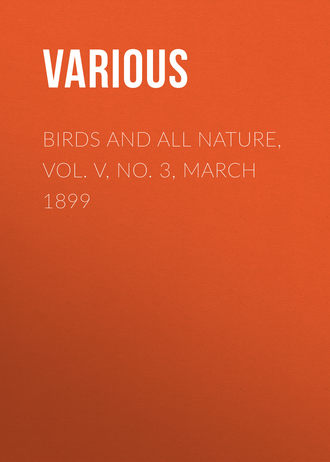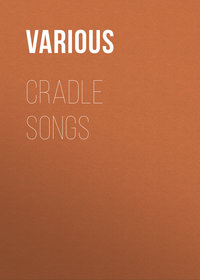
Birds and All Nature, Vol. V, No. 3, March 1899
Minks and weasels have too fierce a nature to accept domestication, and, so far as I have observed, show not the slightest degree of affection for the one who feeds them. That odorous animal, the skunk, however, is very susceptible to kindness, and will become as tame and tractable as a pet dog. One of the most interesting pets I ever had was a skunk taken when very young. It was allowed its full freedom and would follow me around, come at my call, do many little tricks at command, and was as playful as a kitten. Being thoroughly tamed it did not make use of its objectionable means of offense and defense, though when frightened it often "threatened" to. As in the case of the prairie chicken, my pet skunk also disappeared when it was nearly grown, thinking, perhaps, that it could make a better living for itself than I could furnish it. Its favorite food was insects such as May-beetles and their larvæ, grass-hoppers, and almost every kind of bug, worm, or beetle; even hairy caterpillars were devoured after being rolled or moulded with its paws to rub off most of the hairs. This little pet of mine was never troubled with dyspepsia or indigestion and crammed its capacious stomach with a vast amount of food – mostly insects – though small mammals, eggs, birds, and once a young chicken were devoured with relish. Mice of many species can be tamed to some extent though I have found one of the shyest species when in a wild state to be the most readily and thoroughly tamable. I refer to the deer mice. They are pretty, yellowish brown creatures, white underneath, and have large, dark, brilliant eyes and erect ears giving them a very handsome expression. Their hind legs are much longer and stronger than those of the ordinary mouse and they are capable of making extraordinary leaps like the animals from which they get their common name.
When tamed they will learn little easy tricks such as sitting erect and "begging" for food, coming when called by name, etc., and are not so ready to use their teeth on the slightest provocation, as are their cousins, the blue field mice.
By making pets of wild animals much can be learned of their habits, dispositions, and characteristics. Especially their food habits, which, in the wild state, exert so much influence in the economy of nature as checks to the undue increase of other species of animals, insects, or plants.
THE WOODCHUCK
VERY similar in its bodily structure to the marmot, of which it is said to be the nearest American relative, is the woodchuck or ground-hog (Arctomys monax). It is about eighteen inches in length, including the tail. The body is stout, the head broad and flat, the legs short and thick, the fur blackish or grizzled on the upper portion and of a chestnut red on the under surface of the body.
The ground-hog is found in all parts of the region extending from the Atlantic coast west to the Missouri, Iowa, and Minnesota. It inhabits woods, prairies, and meadows, lives on roots, vegetables, and herbs, and is especially fond of red clover. Its burrows are large excavations, and in the early autumn it busies itself in storing provisions for its long winter retreat. It is said to be one of the first hibernating animals to retire to winter quarters and one of the earliest to come forth in the spring, the length of its retirement varying with the locality, and being shorter in the south than in the north. In the northern United States it usually retires about the first of October and reappears about the middle of March. A recent writer and close observer says that woodchucks hibernate in pairs, but he never knew one of these proverbially sleepy creatures to leave its hole until warm weather came – in spite of the alleged practice it has of coming out invariably on the second day of February to fix the weather for the rest of the winter. He took the trouble once to dig into a woodchuck's burrow on a Candlemas day – and a warm, cloudy day it was; just such a day as the ground-hog is said to choose to come out of his hole and stay out. He found two woodchucks in the burrow, with no more sign of life about them than if they had been shot. From all outward appearances he could have taken them out and had a game of football with them without their knowing it. When the animal begins its hibernation it carefully closes the entrance to its burrow. Dr. Bachmann, who had marked a burrow to which he knew a pair of woodchucks had retired, caused it to be opened early in November, and found the two animals, perfectly dormant, lying coiled up close together in a nest of dry grass, twenty-five feet from the entrance.
The young woodchucks, of which there are from four to six in a litter, are born about the end of April. The mother takes tender care of them until they are able to shift for themselves.
The woodchuck, when taken young, is easily tamed, and becomes an interesting pet. The little animal can be taught to come when called, to run for food when whistled to, and to answer to a name. One called Chuck was very fond of bread spread with butter and sugar. If plain bread were offered to him he would taste it, make a wry face, spit out the bit in his mouth, and throw away the piece he held, and then he would straighten himself up and hold out his shining black hands for bread with sugar on it. He always sat up stiffly on his hind legs when eating, and it was a comical sight to see him holding a long banana in his arms, until he had eaten the whole of it, blinking his bright black eyes with satisfaction. Chuck was taught many tricks, to balance a stick on his nose, swing in a trapeze, draw a toy cart, and the like. He was very affectionate and tractable.
Early in September Chuck began to eat voraciously and soon became very fat, but in the first week in October his appetite failed; he ate at first once a day, then once in two days, and after awhile he became quite restless and stupid. He was given his liberty, and watched closely to learn his habits. He began gnawing grass, gathering dry leaves and tucking them in various corners. At length he found a place that suited him to dig, and then he began making his nest. When the excavation was complete Chuck disappeared for several days. One evening he tapped on the kitchen door. When the door was opened he ran to a basket of apples and ate one, then ate a slice of bread and sugar. He appeared crazy with haste, and as soon as he was through eating he scampered off, to be gone a long time. On the first day of February Chuck crept out of his hole, and sat for a moment in the sun. Before he could be reached, however, he had returned to it. In six weeks and three days he again came out, and what was surprising, he did not appear to have forgotten any of his friends, of whom he had many among the cats, dogs, and rabbits of the neighborhood, trotting about among them on his hind legs. A cruel boy and a savage dog ended the life of this harmless little animal.
C. C. M.FLOWERS WITH HORNS AND CLAWS
E. F. MOSBYTHE milkweed is best known to most of us by its pods – long, rough cases, packed close with shining white silk attached to little brown seeds. The lightest wind that blows can carry these a stage or two on their journey with such lovely silken sails. But perhaps everyone has not noticed one rather strange thing about them. Almost always there are two pods, one vigorous of growth, large and full; the other stunted and ill-formed. They are like the two brothers or sisters of Fairy Tales, one fair and well-favored and gracious, the other ill-grown and dwarfish. But why this is so, is one of the many secrets of the milkweed.
It is quite a large family of flowers, or weeds, as you may choose to call them. There is the gorgeous orange-colored butterfly weed, always surrounded by hovering or fluttering butterflies, most of them also orange or yellow in their coloring; the fragrant, rose-colored milkweed of June, the purple milkweed and its cousin of the marsh. But it is the common milkweed that is called the horned herb. It was once thought possessed of many healing virtues when the business of gathering and drying herbs was more important than it is now. Yet one needs no idea of this kind to look with interest on this curiously formed plant which grows in such profusion by the dusty roadside or by our very doorstep. A milky juice exudes from the stem whenever a flower is gathered, and the pollen is in such sticky masses that a feeble insect is often caught and cannot escape with its fatal treasure.
The blossom cluster, reflexed so oddly, is pretty and quaint at first sight, but as we look deeper we find some unknown law of fives has ruled its structure – the recurved calyx is five-parted, so too the deeply recurved corolla; five stamens there are surrounding, like a circle of courtiers, a fairy king and queen, the two pistils in the center, above which hangs "a large five-angled disk," an awning of state. But oddest of all is the crown of five-hooded nectaries above the corolla, each nectary enclosing an incurved horn. Is not this a strange honey-cup with the horn concealed under the silky flower-hood? The insects love the banquet thus spread for their delight and no doubt they know the secrets of the blossom.
There is another family of wild flowers that abounds in horns and claws, especially the latter – the large crowfoot family. The hook-beaked crowfoot has little one-seeded fruits with long and hooked beaks, like those of birds of prey, collected into a head. The wild columbine, nodding so merrily from the high rocks, and the larkspur, have hooked spurs and claws and the larkspur hides its long spurs in its calyx. But the monk's-hood is the more interesting of all.
In early days, before stamens and pistils are ready for open air and wandering insects or pattering showers, you may find a dark blue bud in the meadow. The calyx is large and showy and blue like a flower, and its curved front sepals close the entrance before while the hindmost sepal, like a soldier's helmet, or a monk's hood, comes down over all as a covering. Then the sun shines and the blossom ripens and it is time to open.
Wide fly the little doors, back falls the blue hood, and the golden heart of stamens and pistils is ready with a welcome. But where are the petals? Hidden under the hood are two tiny hammer-like claws, the only petals this flower possesses.
THE COMMON AMERICAN MOLE
THIS mole (Scalops aquaticus) is the most common species in the eastern portion of the United States. Moles are considered as animals of a fairly high order, on account of their forelegs' being developed into perfect scoops for digging. They live almost entirely in underground retreats, where they lead a very peculiar life. They are found over nearly all Europe, a great part of Asia, southern Africa, and North America, and their habits are in almost every respect similar. Their varieties are not numerous, but it is possible that there are still a great many species as yet unknown to naturalists. They are all shaped and endowed, says Brehm, in so striking a manner as to be instantly recognizable. The body is stout and of cylindrical shape, and merges into a small head without the intervention of a distinct neck. The body is supported on short legs; the forward pair appear to be relatively gigantic digging tools, while the hind limbs are longer and resemble those of the rat. The teeth are from thirty-six to forty-four in number.
Moles all delight in fertile plains, though they are also found in mountains. As the effect of light is painful to them, they seldom come to the surface, and even in the depth of the earth they are more active by night than by day. Their movements in their underground passages are much more rapid than when on the surface of the ground, where they can scarcely walk. They are also good swimmers when compelled by necessity to resort to the water.
Of the senses of the moles it is said those of smell, hearing, and touch are especially well developed, while that of sight is deficient. All moles are quarrelsome, are addicted to vicious biting, and they take pleasure in devouring their own kind. They eat only animal food, all kinds of insects living under ground, worms, and the like, though they also feed on small mammals and birds, frogs, and snails. They are exceedingly voracious, and as they can endure hunger only for a very short time, they do not hibernate. They are undoubtedly useful as exterminators of insects, though on account of their digging habits they are considered a nuisance by the farmer.
It was long thought that moles were blind, or had no eyes. The eyes, however, are about the size of a small seed lie midway between the tip of the snout and the ears, and are completely covered with the hair of the head. They are protected by lids, and may be projected or retracted at will.
Once or twice a year the female mole gives birth to from three to five young. They grow rapidly, and remain with the mother for one or two months. Then they begin digging on their own account and require no further attention. They have been found to be very difficult to keep in captivity by reason of their insatiable appetite.
As the mole is obliged constantly to construct new hillocks in order to secure its food, it cannot long hide itself from its enemies. It digs horizontal shafts at a slight depth from the surface, and in order to remove the earth it has dug up, it throws up the well-known hillocks. Many a beautiful lawn has been nearly ruined by the handiwork of this little creature, who likes to bore its snout into loose soil and throw it backward with its powerful forepaws. In a single night it can undo much of the labor of the gardener. In loose ground the animal is said to work with really admirable rapidity. Oken kept a mole in a box of sand for three months, and observed the animal work its way in it nearly as rapidly as a fish glides through the water, snout foremost, using the forepaws to throw the sand to the side and the hind limbs to push it backward. Lecourt, wishing to investigate the speed of a mole in its conduits, set up in a row a number of heavy straws in the main conduit, arranged so that the mole could not run along the passages without touching them. To the tops of these straws he fastened small paper flags, and when the mole was occupied in its hunting ground, he frightened it with the sound of a bugle, and thus caused it to run into the main conduit. Then the little flags fell down one after another, the instant the mole touched them, and the observer and his assistants had an opportunity to correctly record the speed of its course for a short distance.
C. C. M.THE OAK
What gnarled stretch, what depth of shade is his!There needs no crown to mark the forest's king;How in his leaves outshines full summer's bliss!Sun, storm, rain, dew, to him their tribute bring,Which he, with such benignant royaltyAccepts, as overpayeth what is lent;All nature seems his vassal proud to be,And cunning only for his ornament.• • • • •So, from oft converse with life's wintry gales,Should man learn how to clasp with tougher rootsThe inspiring earth – how otherwise availsThe leaf-creating sap that sunward shoots?So every year that falls with noiseless flake,Should fill old scars up on the stormward side,And make hoar age revered for age's sake,Not for traditions of earth's leafy pride.– Lowell."Had I wist," quoth Spring to the swallow,"That earth could forget me, kissedBy summer, and lured to followDown ways that I know not, I,My heart should have waxed not high,Mid-March would have seen me die,Had I wist.""Had I wist, O Spring," said the swallow,"That hope was a sunlit mist,And the faint, light heart of it hollow,Thy woods had not heard me sing;Thy winds had not known my wing;It had faltered ere thine did, Spring,Had I wist."– Swinburne.SKIN
W. E. WATTOne said he wondered that lether was not dearer than any other thing. Being demanded a reason: because, saith he, it is more stood upon than any other thing in the world. —Hazlitt.
What! is the jay more precious than the lark,Because his feathers are more beautiful?Or is the adder better than the eel,Because his painted skin contents the eye?– Shakespeare.A GILDED live pig is a sight rarely seen. The rarity of putting gold leaf all over a living animal of any kind comes from the fact that the animal dies so soon after the operation. It has been tried several times and always with the same result.
The idea arose from an experiment unfortunately performed upon a child on the accession of Leo X. to the papal chair. The child was gilded all over to represent the Golden Age. The people of Florence were delighted with the idea, but the death of the child took place so quickly that some thought the brief duration of the Golden Age was miraculously represented as well as its great glory.
The experiment has never been repeated upon a human subject, but men of science cautiously tried to find out the secret of the child's living but a few hours after the operation, and so gilded pigs and varnished rabbits and other small animals. From such tests of the value of an open skin to animal life they found that all things that have breath must have open skin pores in order to maintain life.
Closing the pores of the skin causes the temperature to fall directly and the heart and lungs become gorged with blood. The circulation of the blood is seriously interfered with and death follows with the usual symptoms of asphyxiation.
Strange as it seemed to those who first witnessed such experiments, the life of an animal is more directly dependent upon the action of the skin than upon that of the stomach, the liver, or even the brain. Monstrosities have been born without brains; but they have frequently lived for some time, taking their food regularly and having the appearance of as much comfort as others of their kind with brains. They died early, but their life was uniformly longer than the time which elapsed after the application of a coating which stopped the skin of other animals until death ensued.
A man will live much longer without stomach action than without the proper functions of the skin. In fact, the skin may take the place of the stomach in sustaining life for awhile, where the act of swallowing has been prevented by disease or accident. Feeding the patient through the skin has been accomplished with varying degrees of success. A bath of warm water or milk and water assuages thirst. Sailors deprived of fresh water wet their clothes with salt water, and the absorption of moisture sustains them where salt water taken into the stomach might have resulted fatally.
The health of the skin is closely connected with that of the whole system. Its appearance and condition as to moisture and dryness, as well as its temperature and color are regularly examined when the system is out of order. Since the skin is so important to the general health and its condition is placed so completely within our control, it is wise to care for it judiciously. We often find other organs of the body in an unsound condition and begin to doctor them when the whole trouble has arisen from bad treatment of the skin. The skin needs more care than the liver or the stomach, and many of the troubles laid at the door of one or both these organs may be avoided by proper care of the one organ over which we have entire control, the skin. Where the skin is prevented from doing its proper work other organs try to carry it on, and the result is that those organs which are really beyond our control, and which will work properly without any attention from us, become diseased by our bad treatment of the organ that comes first in the natural order of attention.
The skin throws off waste matter from the system. Two and one-half pounds of watery vapor is poured out daily from the average man. A clogged skin retains certain salts in the system supposed to have something to do with such diseases as rheumatism and gout if left in the blood by too little exercise of perspiration.
Besides the sweat glands there are glands which exude fatty substances upon the skin, keeping it suitably lubricated and somewhat impervious to water. In some animals this secretion is so abundant that the skin cannot become wet in swimming. Beneath the skin are frequently cushions of fat to protect the soles of the feet and the outside of the larger joints. The blubber of the whale, the thickest skinned of all animals, is of this sort, and is evidently intended to make his tremendous weight less destructive when brought in contact with other objects. The hide of the swifter ones is peculiarly fitted with large papillæ of feeling which are supposed to warn them of the presence of rocks and other objects by the action of the water while swimming near them.
Insects, not having lungs, receive air into their bodies through holes in the skin. These are called spiracles. They are so protected by hairs within the holes that water will not enter them. This is why it is so difficult to drown an insect. But if you touch the abdomen of one of these skin-breathing creatures, for instance the yellow part of a wasp, with a drop of oil, the minute openings become almost immediately clogged and the insect falls dead as if choked completely.
The skin consists of two layers, both of which are exceedingly interesting. The outer or scarf skin is called the cuticle on the outside of the body, while wherever the skin dips into the body it is modified into what is called mucous membrane. This outer skin is not what is rubbed off the surface in a Turkish bath manipulation or what is brought off by the rubbing one gives the body with a rough towel. These rubbings bring off merely the dead outer surface of the cuticle which should be out of the way because no longer useful. In man it continually wears off, in serpents it is shed annually in one slough.
The cuticle is the portion of the covering of the body which may best be noticed when a blister has been raised in the skin. The blister is an accumulation of fluid between the cuticle and the true skin.
The cuticle, or epidermis, is modified in many other ways than the one in which it becomes mucous membrane. Where the habits of the animal make warmth desirable the epidermis dips into the skin and without any break in its connection rises in the form of wool, which covers the body of the sheep so effectually. Where the animal is designed for flight there is the same characteristic dip into the material of the body, and out of the little sac so formed rises the feather which gives the bird its beauty and powers of flight. The feather is a modification of the scarf skin.
Where protection is needed for the body beneath the surface of the water this changeable substance covers the true skin with hard scales that make the friction of the water as slight as possible, while giving a firm and light resisting surface to prevent wounds. Horns and hoofs are modifications of the scarf skin. Where claws or talons are needed in the business of fighting or tearing food in bits or digging holes in the ground or elsewhere, the scarf skin changes itself at the extremities of paws and feet and produces nails, talons, and claws, whose powers are both marvelous and varied. For the protection of most mammals the whole of the body is favored by this power of the scarf skin to produce whatever seems necessary for the comfort of the individual, and the body is indented with innumerable minute holes called hair follicles into which the scarf skin dips and rises again to the surface transformed into hairs of varying degrees of fineness and color, beautifully arranged in order, and all pointing in such directions as will add to the beauty or comfort or terrifying aspect of the animal.
Not only are our hairs numbered, but each particular hair is furnished with a little individual muscle of its own running from the base of the follicle to the inner surface of the true skin, so that when the proper occasion arises for erection of that individual hair the muscle contracts apparently of its own accord, and up stands the hair along with its fellows, ready to frighten the animal that dares to approach in hostile attitude the owner of the precious coat. Similar muscles erect the feathers of the owl, and the gorgeous tail of the peacock dazzles us in the sunlight moved in like manner, while to those more powerful dermal appendages, the claws, talons, and nails, are attached more powerful muscles still, with proper nerve connections for the most effective use of the weapons nature has formed out of the soft outer skin, which is usually so mild and yielding as to have earned the name of scarf skin.









